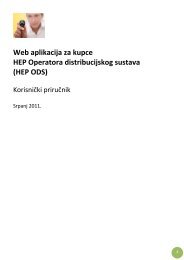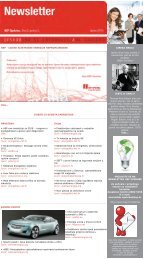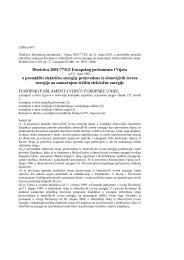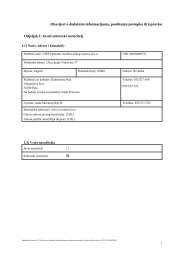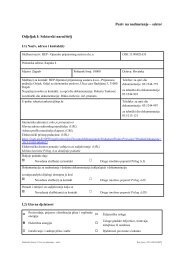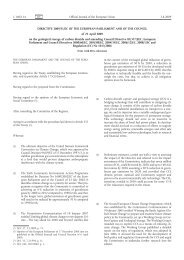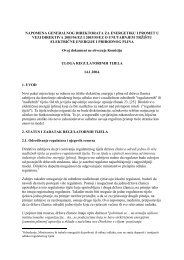DRAVA, KUPA, RJE»INA, LOKVARKA, LI»ANKA LIKA, DOBRA ...
DRAVA, KUPA, RJE»INA, LOKVARKA, LI»ANKA LIKA, DOBRA ...
DRAVA, KUPA, RJE»INA, LOKVARKA, LI»ANKA LIKA, DOBRA ...
Create successful ePaper yourself
Turn your PDF publications into a flip-book with our unique Google optimized e-Paper software.
HEP ANNUAL REPORT 2010<br />
78<br />
CHAPTER 6 - FINANCIAL STATEMENTS<br />
NOTES TO THE CONSOLIDATED FINANCIAL<br />
STATEMENTS OF THE HEP GROUP (CONTINUED)<br />
FOR THE YEAR ENDED 31 DECEMBER 2010<br />
2. SUMMARY OF SIGNIFICANT ACCOUNTING POLICIES (continued)<br />
INVESTMENT PROPERTY<br />
Investment properties are properties held to earn rentals and/or for capital appreciation (including property under<br />
construction for such purposes). Investment properties are measured initially at cost, including transaction costs.<br />
Subsequent to initial recognition, investment properties are measured at fair value. Gains and losses arising from<br />
changes in the fair value of investment properties are included in profit or loss in the period in which they arise.<br />
An investment property is derecognised upon disposal or when the investment property is permanently<br />
withdrawn from use as well as when no future economic benefits are expected from the disposal. Any gain or loss<br />
arising on derecognition of the property (calculated as the difference between the net disposal proceeds and the<br />
carrying amount of the asset) is included in profit or loss in the period in which the property is derecognised.<br />
FINANCE AND OPERATING LEASES<br />
The Group as lessee<br />
The Group has no significant finance lease arrangements and no significant operating lease arrangements were<br />
entered during 2010 and 2009. Amounts payable under operating leases are recognised as expense on a straight-line<br />
basis over the term of the relevant lease, unless there is another systematic basis that would be more representative<br />
of the time pattern of the user’s benefit.<br />
TRADE DEBTORS AND PREPAYMENTS<br />
Trade receivables are carried at cost less provision for bad and doubtful receivables.<br />
Management provides for doubtful receivables based on a review of the overall ageing of all receivables and<br />
a specific review of significant individual amounts receivable.<br />
As the collectability of certain receivables over a longer term is not certain, the Group makes an allowance<br />
for unrecoverable amounts, based on a reasonable estimate and past experience, in order to value adjust those<br />
amounts as follows during 2009 year:<br />
Ageing of past due Allowance percentage<br />
61 – 90 days 5%<br />
91 – 120 days 10%<br />
121 – 365 days 20%<br />
Over one year 100%<br />
In 2010 Group has changed percentages of allowance based on review of actual experience :<br />
Ageing of past due Allowance percentage<br />
31 – 60 days 1.5%<br />
61 – 90 days 3%<br />
91 – 180 days 9%<br />
181 – 365 days 30%<br />
Over one year 90%



